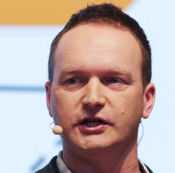Advertising Models Must Evolve to Better Support APAC Marketers


The advertising world today is still running on old models that need to evolve with technological advancements, so marketers finally can effectively push customised ads tailored to individual customers, and in an omnichannel environment.
Business agility was key, especially in a world populated with mobile devices and social media platforms, said Jamie Anderson, SAP Hybris' senior vice president and CMO, at the company's digital summit in Singapore. The SAP business specialised in software for customer engagement and commerce across digital channels.
Anderson noted that the user engagement model today was a broken metaphor because it was driven by the notion of a funnel that was established decades ago. While the four components of 'awareness', 'interest', 'desire', and 'action' remained relevant today, they were no longer linear and did not conform to a model on which many existing customer relationship management (CRM) systems were built.
He said the customer journey was multi-staged, with awareness spanning platforms across social, print, digital, and TV. Actions were multichannel and nonlinear, he said, with every channel a service channel that must be powered by some form of intelligence.
This, though, was largely absent today.
Citing findings from a 2016 SAP Hybris study, Anderson said only 17% of businesses were ready to support mobile-first engagement with customers. In addition, 56.6% of businesses remained unreachable via social media; and 76.3% operated CRM systems that had no way of tracking customer social media interactions.

Jamie Anderson, Senior VP & CMO, SAP Hybris
"As soon as you put up a sign to say you're open, you're inviting people to connect with you. And if there's no engagement mechanism to interact, you're creating disappointment", he cautioned, noting that customers were harder to engage than ever and brand loyalty had never been under more threat from consumer experience.
Pointing to stats from Google, he said that 99.76% of online ads were ignored, largely due to irrelevance or out-dated information. Also, 60% of consumers abandoned a purchase due to poor service experience, he added, referencing American Express Global Barometer.
Consumers no longer looked simply at the face value of a product and this would change business models in terms of how products were sold and used, said Marcus Ruebsam, SAP Hybris' senior vice president of strategy and solutions, speaking to reporters at the sidelines of the summit.
Anderson concurred, noting a marked shift in how businesses now needed to engage customers, where agility and flexible systems were critical to enable organisations to build new products at the convenience of their customers.
Ruebsam added that companies previously focused on building customer life profiles, but with access to data intelligence and actionable insights, must now include contextual user experience as well as consumption.
Despite the increased intelligence and much-touted data-driven marketing, however, brands still are experiencing missteps with consumers. For instance, they're being shown the same ads multiple times and even after they already purchased the product.
Asked about this, Anderson told ExchangeWire that technology had moved faster than most businesses' ability to adopt and adapt. More importantly, though, the benefits of technological advancements could not be realised when industries were resistant to change.
He noted that marketers today still could not effectively measure the impact of campaigns on their targeted audience.
Anderson said: "If I wanted to disrupt the agency world, I would introduce a pay-for-performance model. But agencies are still wedged in old models. Advertising today still runs on old models. A lot of marketing, at its core, is still traditional."
He added that most in the industry were rooted in long-established business models that needed to change. He recalled, for example, how there were digital product ads still being pushed out without an embedded 'buy' button, even though there were technology and microservices to facilitate this. This also would have allowed the brands to measure the effectiveness of the ad in driving sales for that product.
The SAP executive also pitched the possibility of pushing customised TV ads tailored to individuals within a household, and at the time they typically would be watching certain TV shows. This still was not an option for marketers, even though all the necessary technology components were available today to facilitate this, he said, pointing to platforms such as SAP's HANA, which could handle real-time data analytics.
This possibility would transform the entire ad industry, he said.
Or disrupt an industry that still depended largely on bulk bookings, Ruebsam chimed in. He further noted that organisations were grappling with teams and data operating in silos, with the email marketing systems not integrated with the sales. This would result in customers receiving repeated ads for a product they already had purchased.
According to the SAP study, 77.2% of businesses depended on CRM tools that were "dumb dashboards at best" and generated no insights or actionable intelligence.
ExchangeWire asked if the emergence of Internet of Things (IoT) would further complicate this, since these devices would significantly drive the volume of data collected and, hence, that needed to be analysed.
Anderson said this would be overwhelming only if businesses assumed every piece of data needed a response. With the help of machine learning and artificial intelligence, organisations would be able to determine what kinds of data were needed to generate actionable insights and improve customer experience.
With large volumes of data "floating around", the ability to extract actionable insights was the big challenge, said Richard Raj, group digital solutions and innovations manager at Frucor Beverages.
Speaking at a customer panel at the digital summit, Raj explained that the F&B company already had more than sufficient data available in-house, as well as the necessary systems and tools to tap insights from the data. So the key thing to crack was figuring out what insights could be pulled from the data that could eventually lead to actionable insights.








Follow ExchangeWire